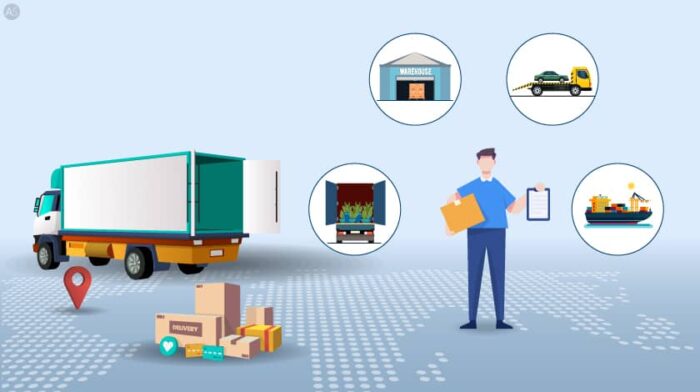
Moving a business isn’t like moving a home. It’s a complex endeavor that can have ripple effects on your operations, staff, and bottom line. Whether you’re relocating due to business expansion, a more strategic location, or better facilities, it’s imperative to ensure the move is smooth to prevent any unnecessary disruptions. Commercial relocation is a common phenomenon, especially in cities like Chicago. In 2022, companies like Tyson Foods, Citadel, Boeing, and Caterpillar moved out of Chicago. For whatever reasons, we cannot assume commercial moves are any less challenging, if not more, than household moves. So, before you start packing those office desks and chairs, here are some crucial factors you should consider.
1. Timing and Scheduling

When to move is as crucial as how to move. Timing is everything. Ideally, you’d want to schedule the move during a period when it would have the least impact on your business operations. For many businesses, this might mean moving during the weekend or after office hours. But remember, what works for one business might not work for another. Retailers might find weekends to be their busiest days, while a B2B company might find weekends ideal.
Coordination is the key. Engage with different departments to understand their peak times and significant commitments. For instance, you wouldn’t want to move when your finance department is in the midst of year-end accounting.
2. Choosing the Right Moving Company

At the forefront of a successful commercial move is the selection of a reliable and experienced moving company. Not all movers are cut out for the intricate needs of shifting a business. That’s where specificity matters. Hiring a company with expertise in commercial relocation will make a world of difference.
Let’s say you’ve hired Chicago Commercial Movers. Being local to Chicago, they understand the nuances of the city – from navigating its streets to understanding the best times to move to avoid traffic congestion. They would also be aware of any city-specific regulations or requirements that might pertain to commercial relocations. When selecting a moving company, it’s not just about the physical move; it’s about local expertise, knowledge, and the peace of mind that comes with it.
3. Budgeting and Costs
Moving a business involves costs – and sometimes, these can spiral if not kept in check. Begin by understanding the major expenses. These can range from the fees of the moving company to the costs of packing supplies. However, it’s the hidden costs that often catch businesses off guard. Maybe there’s a fee for moving during non-business hours, or perhaps there’s a charge for disassembling and reassembling office furniture.
To avoid any unwelcome financial surprises, get detailed quotes from your chosen moving company. Make sure it’s all-inclusive, with a clear breakdown of every charge. It’s also a good idea to set aside a contingency fund, just in case there are any unforeseen expenses. Remember, as with all things business, diligent financial planning and budgeting can save you a lot of headaches down the line.
4. Communication and Employee Involvement

While the logistics of a move are vital, the human element is just as crucial. The success of a commercial move is often determined by how well-informed and involved the staff are. Think about it: employees spend a significant portion of their days in the office. The move isn’t just about shifting equipment; it’s about transitioning a space that holds memories, routines, and a sense of familiarity.
Start by communicating the move well in advance since this gives employees ample time to prepare, both mentally and in terms of their workspace. Regular updates about the move, perhaps through emails or team meetings, can also be beneficial. Such updates can cover essential dates, procedures, and any roles that specific team members might play in the moving process.
Designating point persons or departmental coordinators can help streamline the move. These individuals can act as the go-to persons for any moving-related queries within their teams. Their role can include making sure that their department’s needs are addressed, overseeing the packing of departmental resources, and ensuring that the unpacking in the new location goes off without a hitch.
5. Inventory Management and Decluttering
Moving an entire commercial space offers a fantastic opportunity: the chance to declutter. Over the years, offices accumulate a plethora of items – many of which might no longer be needed. Before packing, it’s a wise move to catalog everything. This inventory will not only help in ensuring nothing gets lost in transit but also aid in identifying items that can be tossed, donated, or recycled.
The process of decluttering is quite liberating. By shedding unnecessary items, businesses often find that their new spaces are more organized, efficient, and conducive to productivity. It’s also cost-effective; fewer items mean fewer things to move, translating to savings in moving costs.
However, decluttering should be systematic. Label everything. Use color-coded stickers or tags to identify items that are to be moved, discarded, or donated. Such an organized approach will prove invaluable when it’s time to unpack in the new space, making the process smoother and faster.
6. IT Infrastructure and Technical Setup
In today’s digital age, the IT infrastructure is the backbone of many businesses. Moving this infrastructure, which includes computers, servers, and networking equipment, requires careful planning. The goal is simple: minimize disruption and ensure that the business is up and running in the shortest time possible post-move.
Start by collaborating with the IT department. Understand the intricacies involved, from safely moving technical equipment to planning for potential downtimes. Servers, in particular, need special care. They need to be backed up, carefully packed, and transported in a manner that prevents any damage.
Another critical aspect is the technical setup in the new location. Where will the servers be housed? How will the networking cables be laid out? Are there sufficient power outlets for all the equipment? Answering these questions beforehand can expedite the IT setup process. The faster the technical setup is completed, the quicker the business can resume its normal operations.
Conclusion

Undertaking a commercial move is a monumental task. However, with careful planning, clear communication, and attention to both logistical and human factors, businesses can ensure a smooth transition. Remember, it’s not just about moving physical items from Point A to Point B; it’s about transitioning an entire operational ecosystem. By considering factors like choosing the right movers, budgeting, employee involvement, inventory management, and IT infrastructure, businesses pave the way for a move that’s efficient, effective, and relatively stress-free.

















